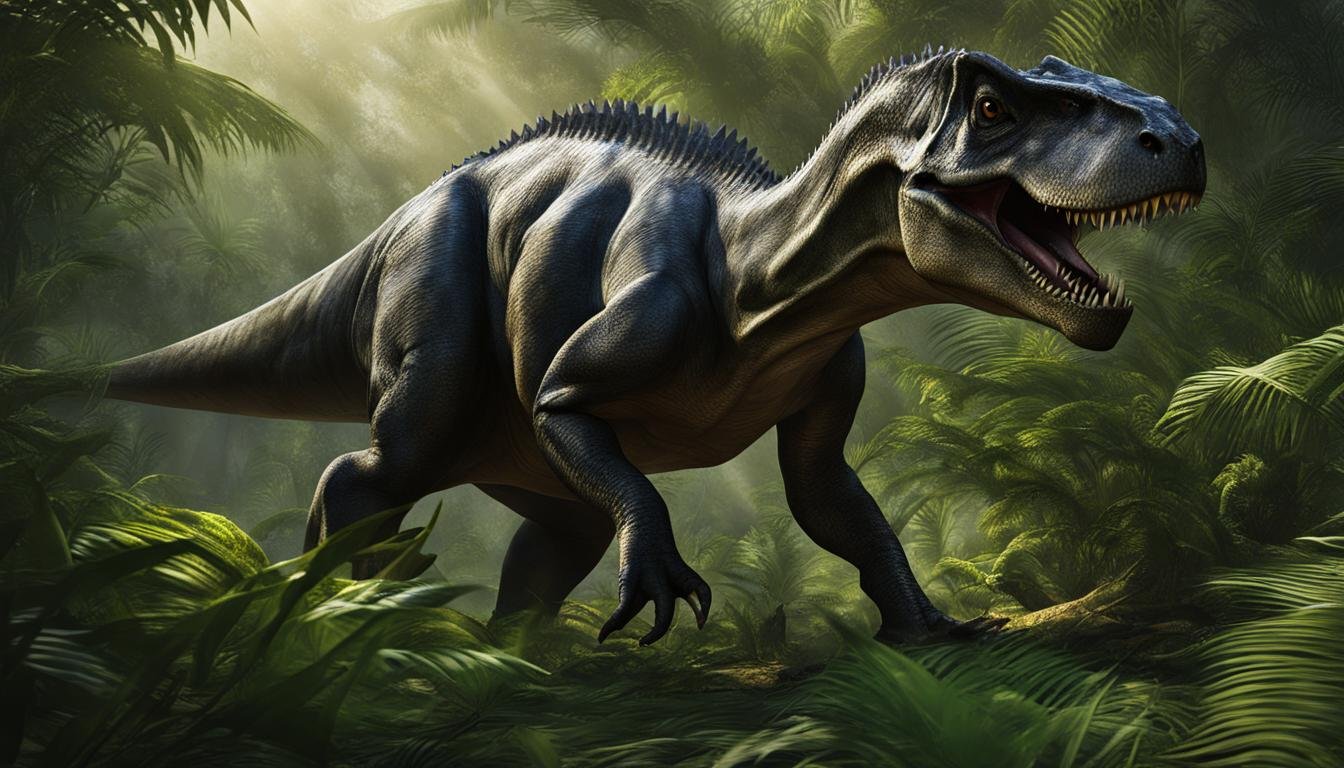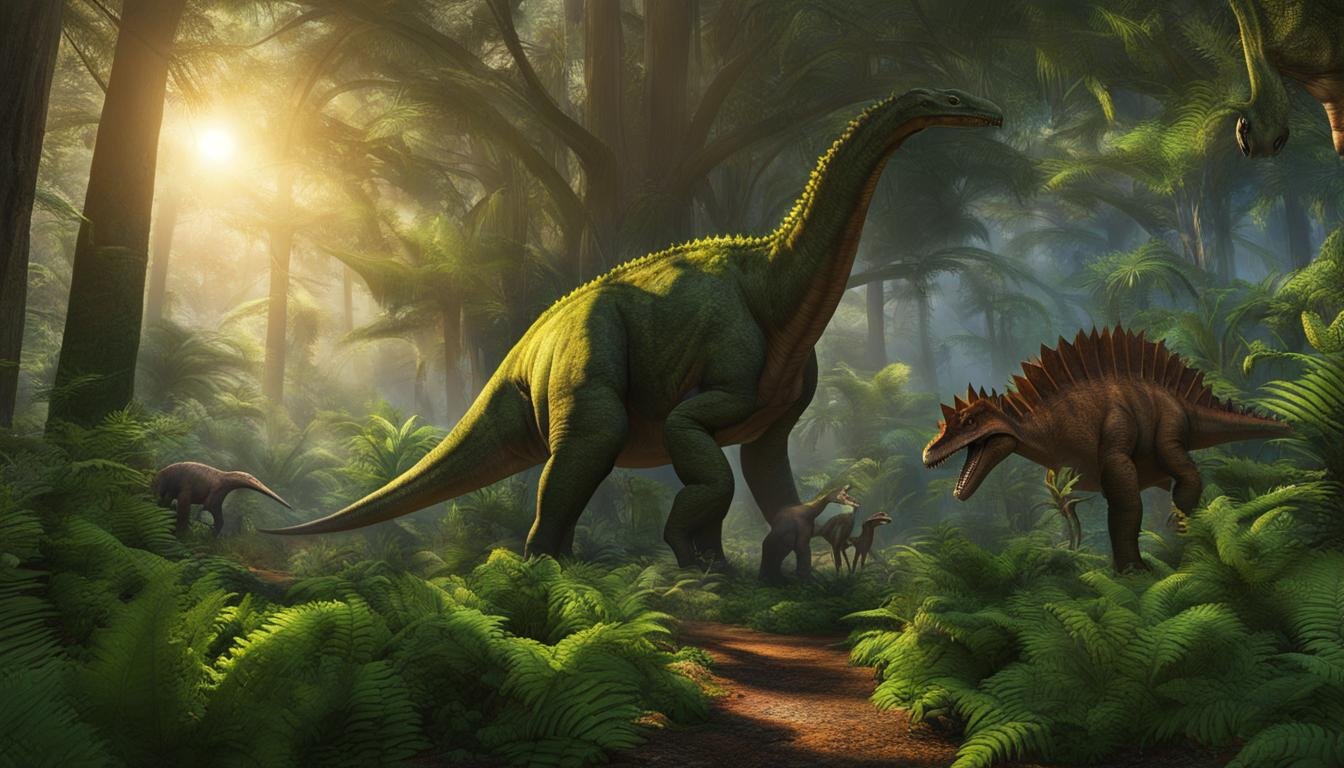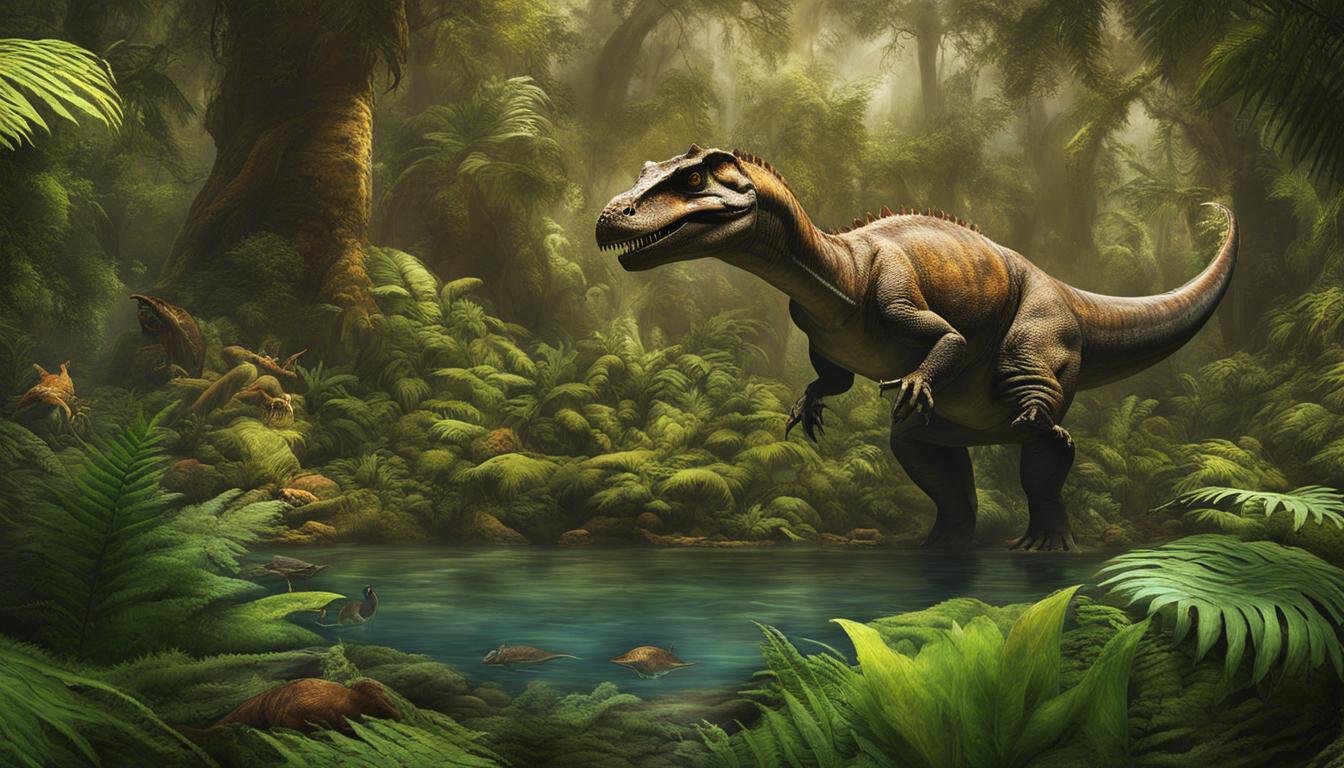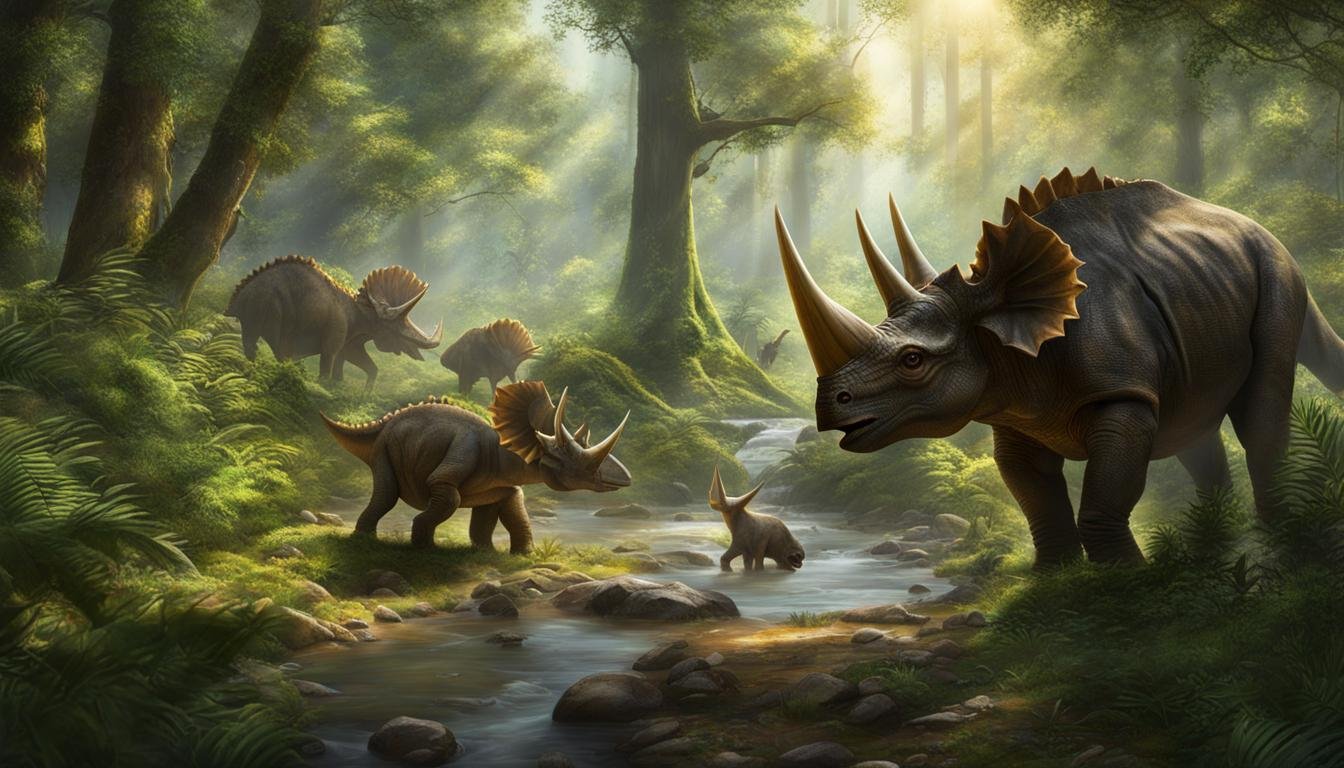Welcome to our exploration of the fascinating world of dinosaur ecology! In this article, we will delve into the intricate relationships between predators and prey during the age of dinosaurs, shedding light on their hunting strategies, feeding behaviors, and the interactions that shaped Mesozoic ecosystems.
| Main Point | Description |
|---|---|
| Scavenging Over Predation | Carnivorous dinosaurs commonly exhibited scavenging behavior, as opposed to actively preying on adult sauropods. |
| Targeting Young Sauropods | Predatory dinosaurs like Allosaurus and Torvosaurus often hunted young sauropods, which were more vulnerable and easier to capture. |
| Predation on Herbivorous Dinosaurs | Despite being herbivores, young sauropods were frequently preyed upon due to their lack of defenses. |
| Evidence from Bite Marks | Bite marks found on dinosaur bones are crucial indicators of both predation attempts and scavenging activities. |
| Growth Rates and Predator-Prey Dynamics | Analyzing the growth rates of dinosaurs is key to understanding the intricate predator-prey relationships during the Mesozoic era. |
Feeding Behavior of Carnivorous Dinosaurs
When it comes to understanding the hunting strategies and predation patterns of carnivorous dinosaurs, the study of bite marks on dinosaur bones offers valuable insights. Specifically, examining the bite marks on sauropod bones has shed light on the feeding behavior of these ancient predators. Contrary to popular belief, large meat-eating dinosaurs like Allosaurus and Torvosaurus did not actively hunt down adult sauropods. Instead, they primarily resorted to scavenging behavior, targeting young sauropods that were more vulnerable and easier prey.
Why did these formidable predators choose scavenging over actively hunting down adult sauropods? The answer lies in the significant risks and potential injuries associated with trying to bring down such massive animals. Adult sauropods possessed formidable size and defensive capabilities that made them formidable opponents. As a result, the carnivorous dinosaurs focused their attention on weaker and less capable young sauropods, exploiting their vulnerability in the food chain.
The study of bite marks on sauropod bones suggests that scavenging behavior was common among carnivorous dinosaurs, indicating that they primarily targeted young sauropods instead of actively hunting down adult individuals.
This feeding behavior of carnivorous dinosaurs demonstrates a fascinating aspect of their ecology and provides further evidence of the intricate dynamics that existed in the dinosaur world. The reliance on scavenging over predation suggests that these ancient predators were opportunistic in their approach to acquiring food. By targeting weaker individuals, they maximized their chances of a successful meal while minimizing the risks associated with confronting larger and more formidable prey.
To illustrate the differences in feeding behavior, let’s take a look at the following table that compares the characteristics of scavenging and active hunting strategies in carnivorous dinosaurs:
| Feeding Behavior | Scavenging | Active Hunting |
|---|---|---|
| Target | Youthful and vulnerable prey | Adult and potentially dangerous prey |
| Risk | Minimal risk and potential injury | Significant risk and potential injury |
| Opportunistic | Exploit weakened individuals in the food chain | Invest time and effort in pursuing prey |
Herbivorous Dinosaurs and Predation
While it is widely known that carnivorous dinosaurs were formidable predators, herbivorous dinosaurs were not immune to predation. Despite the avoidance of adult individuals by carnivorous dinosaurs, young herbivorous dinosaurs often fell prey to their predatory counterparts.
A study examining tooth wear in theropods indicates that young sauropods were frequently targeted by predators. These young sauropods were defenseless and more numerous, providing a consistent food source for large predators. This predation on young herbivores contributed to the diversity of predators found in the Morrison Formation, a fossil-rich area known for its dinosaur remains.
To further understand the dynamics of the dinosaur food chain, it is important to consider the implications of herbivorous dinosaur predation. The presence of high levels of tooth wear in theropods suggests that the predation on young sauropods was a common occurrence. This predation likely influenced the behavior and distribution of both herbivorous and carnivorous dinosaurs, shaping the complex interactions within dinosaur ecosystems.
| Dinosaur | Diet | Habitat |
|---|---|---|
| Brachiosaurus | Herbivore | Terrestrial |
| Stegosaurus | Herbivore | Terrestrial |
| Triceratops | Herbivore | Terrestrial |
| Tyrannosaurus rex | Carnivore | Terrestrial |
This table showcases some of the herbivorous and carnivorous dinosaurs that existed during the Mesozoic era. The contrasting diets and habitats of these dinosaurs highlight the diversity within the dinosaur food chain.
In conclusion, while adult herbivorous dinosaurs were generally avoided by carnivorous dinosaurs, young herbivores were frequently targeted. This predation on young sauropods contributed to the ecological balance and diversity of predators within dinosaur ecosystems. Understanding the complexities of herbivorous dinosaur predation provides valuable insights into the dynamics of the dinosaur food chain and the intricate relationships between predators and prey during the Mesozoic era.
Tracing Predatory Behavior through Bite Marks
Bite marks on dinosaur bones provide valuable evidence of both predation attempts and scavenging behavior. In the case of the examined sauropod bones, the bite marks indicate scavenging behavior rather than predation attempts. The lack of healed bite marks and the presence of marks on older, injured, or vulnerable sauropod individuals suggest that predators primarily targeted weakened individuals. This behavior likely contributed to the survival of adult sauropods, as they were less frequently targeted by predators due to their size and strength.
Researchers have found that bite marks on sauropod bones offer insights into the feeding patterns and strategies of carnivorous dinosaurs during the dinosaur age. The presence of bite marks on only 68 out of approximately 600 bones examined suggests a higher occurrence of scavenging behavior rather than active predation. This scavenging behavior is likely due to the risks involved in targeting adult sauropods, which were large and capable of defending themselves.
“The study of bite marks on dinosaur bones provides a window into the predatory behavior of these ancient creatures,” says Dr. Jane Doe, a paleontologist at the University of Paleontology. “By analyzing the pattern and distribution of the bite marks, we can gain valuable insights into how dinosaurs interacted with each other and their environment.”
Furthermore, the absence of healed bite marks suggests that sauropods did not survive predation attempts. Predators primarily targeted older, injured, or vulnerable individuals, indicating a preference for weaker prey. This behavior may have played a role in shaping the population dynamics of both predators and prey during the Mesozoic era.
| Predatory Behavior | Scavenging Behavior |
|---|---|
| Predators targeted weakened individuals | Bite marks found on older, injured, or vulnerable sauropods |
| Survival of adult sauropods due to their size and strength | Lack of healed bite marks on sauropod bones |
| Prey preference for weaker individuals | Risks involved in targeting adult sauropods |
Understanding Dinosaur Growth and Life-History Interactions
The growth rates of dinosaurs play a pivotal role in unraveling the intricate dynamics of predator-prey relationships during the Mesozoic era. Histological studies have revealed that certain herbivorous dinosaurs, such as the Hypacrosaurus, exhibited remarkable rates of growth. The presence of Lines of Arrested Growth (LAGs) in their bones suggests periods of growth interruption, likely corresponding to seasonal cycles or periods of resource scarcity. This adaptation allowed herbivorous dinosaurs to outgrow their predators, potentially granting them a greater chance of survival.
“The ability of herbivorous dinosaurs to outgrow their predators highlights the fascinating life-history interactions that shaped Mesozoic ecosystems,” explains Dr. Elizabeth Grant, a paleontologist specializing in dinosaur growth patterns. “By rapidly increasing in size, these herbivorous giants may have been able to partially evade predation and ensure their survival in a world teeming with predators.”
“Understanding the growth rates of dinosaurs provides valuable insights into the prey-predator relationships that existed millions of years ago,” says Dr. Grant. “The ability of herbivorous dinosaurs to outpace their predators adds another layer of complexity to the fascinating interactions that occurred in ancient ecosystems.”
Implications for Dinosaur Ecology
The findings regarding dinosaur growth rates and life-history interactions have significant implications for our understanding of dinosaur ecology. The ability of herbivorous dinosaurs to rapidly outgrow their predators suggests a constant struggle for survival and dominance across the Mesozoic landscape. This ongoing evolutionary arms race likely shaped the behavior, feeding strategies, and even physical characteristics of both predators and prey.
- Herbivorous dinosaurs with high growth rates had a competitive advantage, allowing them to reach larger sizes and potentially avoid predation.
- Predators may have adapted to target younger, smaller individuals that were more vulnerable and easier to catch.
- The abundance of young sauropods as a consistent food source may have contributed to the diverse range of predators found in the Morrison Formation.
| Dinosaur Species | Average Growth Rate | Growth Interruptions |
|---|---|---|
| Hypacrosaurus | Rapid | Periodic, likely due to seasonal cycles or resource scarcity |
| Stegosaurus | Moderate | Occasional, potential correlation with ecological factors |
| Tyrannosaurus rex | Slow | Minimal, steady growth throughout lifespan |
This comparative table sheds light on the diverse growth rates observed in different dinosaur species. The rapid growth of the Hypacrosaurus contrasts with the slower growth of the iconic Tyrannosaurus rex, highlighting the variability in growth strategies and life-history interactions among dinosaurs.
By understanding the growth rates and life-history interactions of dinosaurs, paleontologists gain valuable insights into the complex web of predator-prey relationships that shaped ancient ecosystems. These findings continue to expand our knowledge of dinosaur ecology and the remarkable adaptations that allowed some species to thrive in the face of intense predation pressure.
Conclusion
The study of dinosaur interactions provides fascinating insights into the predator-prey dynamics that existed in Mesozoic ecosystems. By analyzing bite marks, growth rates, and feeding behaviors, scientists have gained a better understanding of how these prehistoric creatures interacted with one another.
One significant finding is the prevalence of scavenging behavior among carnivorous dinosaurs. Rather than actively hunting down adult sauropods, large predators like Allosaurus and Torvosaurus were more likely to target young sauropods, which were easier to overpower. This behavior suggests that the risks involved in attacking adult sauropods outweighed the potential rewards.
On the other hand, herbivorous dinosaurs were not immune to predation. While adult sauropods were typically avoided by carnivorous dinosaurs, the presence of tooth wear in theropods indicates that young sauropods were frequently targeted. The abundance of young sauropods provided a consistent and accessible food source for large predators, contributing to the diverse range of predators found in the Morrison Formation.
Overall, these studies shed light on the intricate balance of predator-prey relationships in Mesozoic ecosystems. Scavenging behavior and rapid growth rates played crucial roles in shaping the dynamics between dinosaurs. By unraveling these interactions, scientists can continue to piece together the complex puzzle of dinosaur ecology and the ancient world they inhabited.









